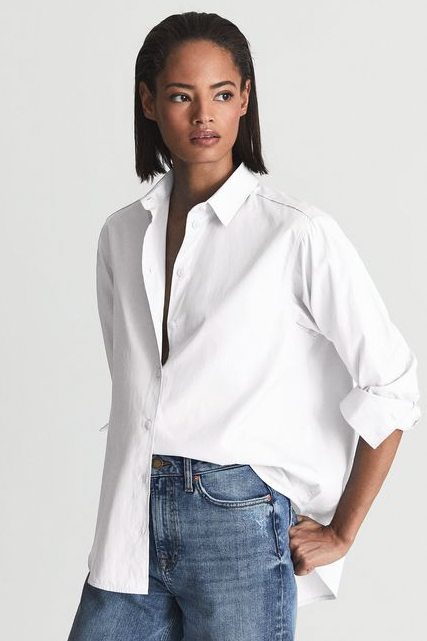The dress shirt is a timeless and essential wardrobe staple that embodies style, sophistication, and versatility. From formal occasions to professional settings, dress shirts elevate any outfit, exuding confidence and class. In this article, we will explore the different types and styles of dress shirts, their key features and construction, the importance of proper fit and sizing, the significance of fabric choices, the art of pairing dress shirts with various attire, and the future of dress shirts in the ever-evolving world of fashion.

In This Article
- 1 I. The Different Types and Styles of Dress Shirts
- 2 II. The Key Features and Construction of Dress Shirts
- 3 III. The Importance of Proper Fit and Sizing
- 4 IV. The Significance of Fabric Choices
- 5 V. The Art of Pairing Dress Shirts with Various Attire
- 6 VI. The Future of Dress Shirts: Adaptation and Innovation
I. The Different Types and Styles of Dress Shirts
1.1 Classic Dress Shirts:
Classic dress shirts are the quintessential choice for formal and professional occasions. They feature a button-front design with a pointed collar, long sleeves, and a straight-cut hem. Classic dress shirts are characterized by their clean and tailored look, making them suitable for a range of formal dress codes.
1.2 Modern Dress Shirts:
Modern dress shirts offer a contemporary twist to traditional styles. They often feature slimmer cuts, different collar styles, and unique patterns or textures. These shirts cater to individuals seeking a fashion-forward approach to formal or professional attire, allowing them to express their personal style while maintaining a polished appearance.

II. The Key Features and Construction of Dress Shirts
2.1 Collar Styles:
Dress shirts come in various collar styles, each offering a distinctive look. The spread collar is a versatile choice, suitable for both business and formal occasions. The point collar is a timeless option, exuding a classic and refined aesthetic. The button-down collar provides a more casual touch, maintaining a polished appearance while offering a relaxed vibe. The choice of collar style can significantly impact the overall look and feel of a dress shirt.
2.2 Cuff Styles:
Cuff styles play a crucial role in the appearance and formality of a dress shirt. French cuffs, characterized by elongated cuffs folded back and fastened with cufflinks, exude elegance and sophistication. Barrel cuffs, on the other hand, feature a single button closure and are more versatile, suitable for both formal and business attire. The choice of cuff style allows for personalization and adds a touch of individuality to a dress shirt.

III. The Importance of Proper Fit and Sizing
3.1 Measuring and Tailoring:
Proper fit and sizing are essential when it comes to dress shirts. Measurements should be taken to ensure accurate sizing, focusing on the neck, sleeve length, chest, and waist. However, off-the-rack dress shirts may not always provide a perfect fit for every individual. Tailoring can be an option to achieve a more personalized fit, whether it involves alterations to the sleeves, body, or collar. The importance of a well-fitted dress shirt cannot be overstated, as it enhances both comfort and style.
3.2 Size Charts and Guidelines:
Many retailers provide size charts and guidelines to assist customers in selecting the right size. These charts typically include neck, sleeve, and chest measurements, allowing individuals to determine the most appropriate size based on their specific measurements. Consulting size charts and guidelines helps ensure a better fit when purchasing dress shirts online and reduces the need for excessive alterations.

IV. The Significance of Fabric Choices
4.1 Cotton:
Cotton is the go-to fabric for women shirts due to its breathability, comfort, and versatility. Its natural fibers allow air circulation, keeping the wearer cool and ensuring maximum comfort throughout the day. Cotton dress shirts are available in various weaves, such as poplin, twill, or Oxford, each offering unique characteristics and textures. Poplin weaves provide a smooth, lightweight feel, making them perfect for dress shirts with a more formal look. Twill weaves, on the other hand, offer a slightly thicker fabric with a diagonal pattern, adding depth and texture to the shirt. Oxford weaves have a more casual and rugged appearance, making them suitable for both formal and casual occasions.
Cotton dress shirts can be worn in any season, as the fabric’s breathability helps regulate body temperature. During warmer months, cotton allows air to circulate, preventing excessive sweating and providing a cool and comfortable wearing experience. In colder months, cotton can be layered with a sweater or jacket to provide warmth while maintaining a polished and refined appearance. The crisp and soft feel of cotton lends itself to a classic and timeless aesthetic, ensuring that dress shirts made from this fabric never go out of style.
4.2 Blend Fabrics:
Blend fabrics, such as a cotton-polyester blend, combine the benefits of different materials. These fabrics offer enhanced durability and wrinkle resistance, as well as moisture-wicking properties. This makes them particularly suitable for individuals who require a dress shirt that withstands the rigors of a busy lifestyle while maintaining a polished appearance.

V. The Art of Pairing Dress Shirts with Various Attire
5.1 Formal Attire:
When pairing dress shirts with formal attire, selecting the right color and pattern is key. Classic white or solid-colored shirts are safe choices that complement tuxedos or formal suits. For added elegance, subtle patterns such as pinstripes or microchecks can provide a touch of visual interest without overwhelming the overall ensemble.
5.2 Professional Attire:
In professional settings, dress shirts offer a canvas for self-expression while maintaining a polished appearance. Blue and white dress shirts are timeless choices that pair well with various suit colors. Striped or checked patterns can add visual interest and personality to a professional outfit, while still conveying a sense of professionalism and authority.
VI. The Future of Dress Shirts: Adaptation and Innovation
6.1 Sustainable Materials and Practices:
As the fashion industry embraces sustainability, dress shirts are likely to incorporate more environmentally friendly materials and production methods. This may involve the use of organic cotton, recycled fabrics, or innovative materials that reduce environmental impact. The future of dress shirts lies in adopting sustainable practices to ensure a more responsible and eco-friendly approach to fashion.

6.2 Technological Advancements:
Advancements in textile technology open up new possibilities for dress shirts. Innovations such as wrinkle-resistant fabrics, moisture-wicking properties, or self-cleaning capabilities may be incorporated, offering increased comfort and convenience. Technological advancements will continue to enhance the performance and functionality of dress shirts, adapting to the evolving needs and preferences of individuals in a modern world.
In conclusion, dress shirts embody style, elegance, and versatility, making them a fundamental component of any wardrobe. Whether opting for classic or modern styles, the choice of collar and cuff styles, proper fit, and attention to fabric choices all contribute to an individual’s personal sense of style and the overall aesthetic. Pairing dress shirts with appropriate attire further enhances their impact in different settings. The future of dress shirts lies in adapting to sustainable practices and incorporating technological advancements that enhance performance and comfort. As fashion continues to evolve, the dress shirt remains a timeless piece that combines style and elegance, ensuring that individuals make a sophisticated statement wherever they go.


